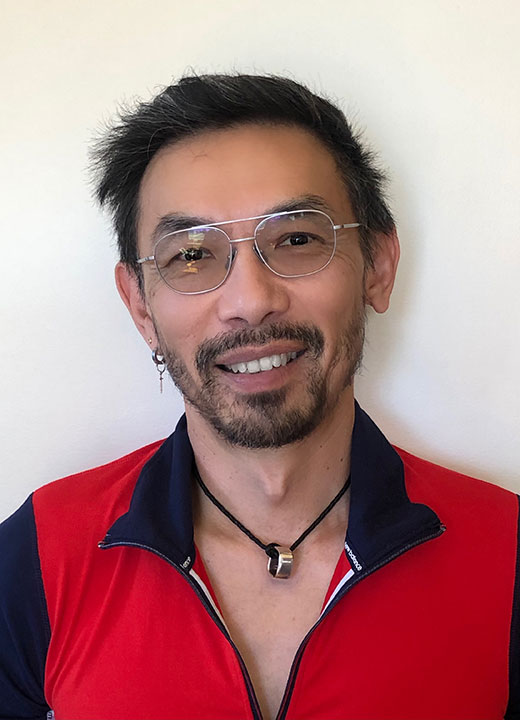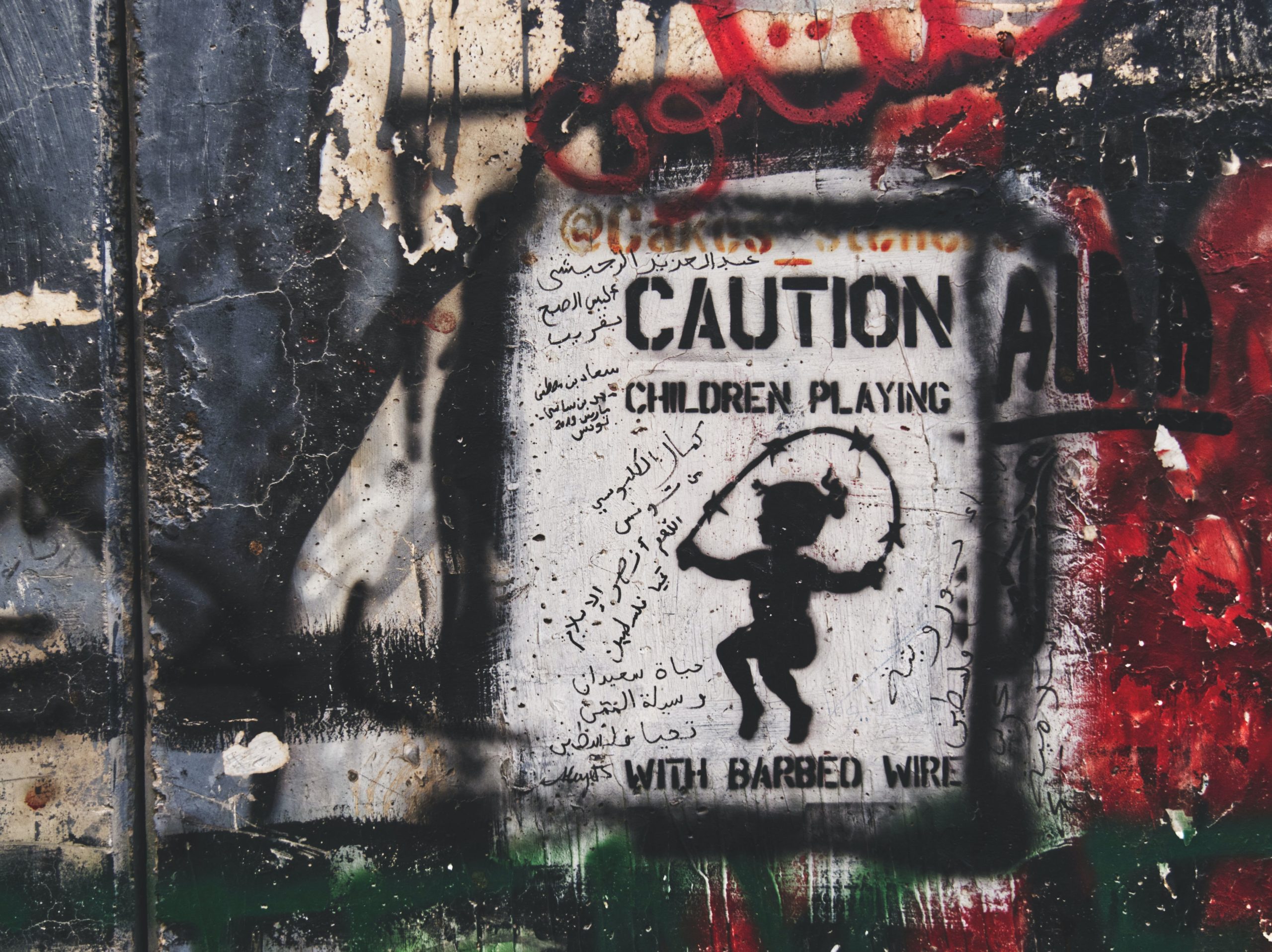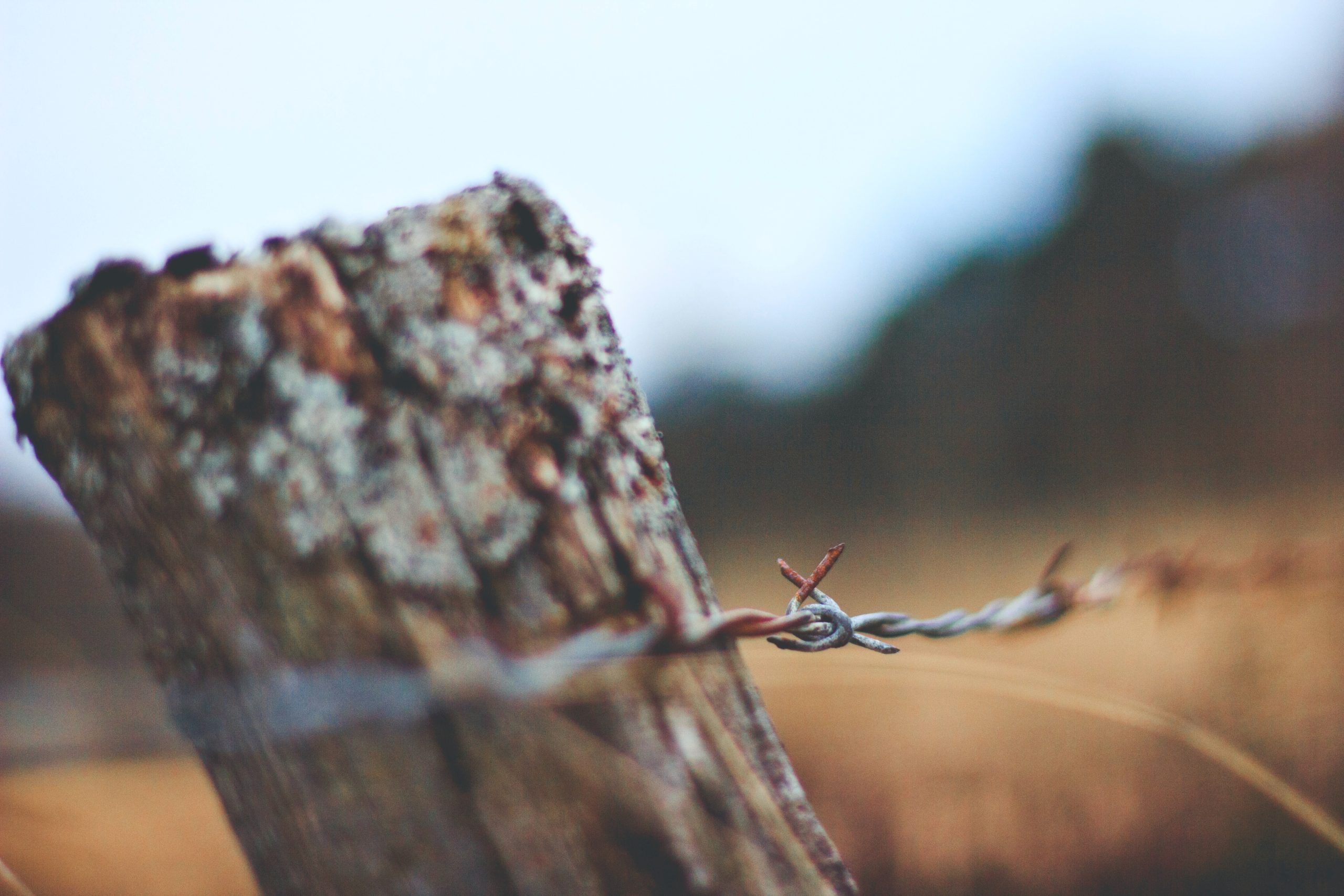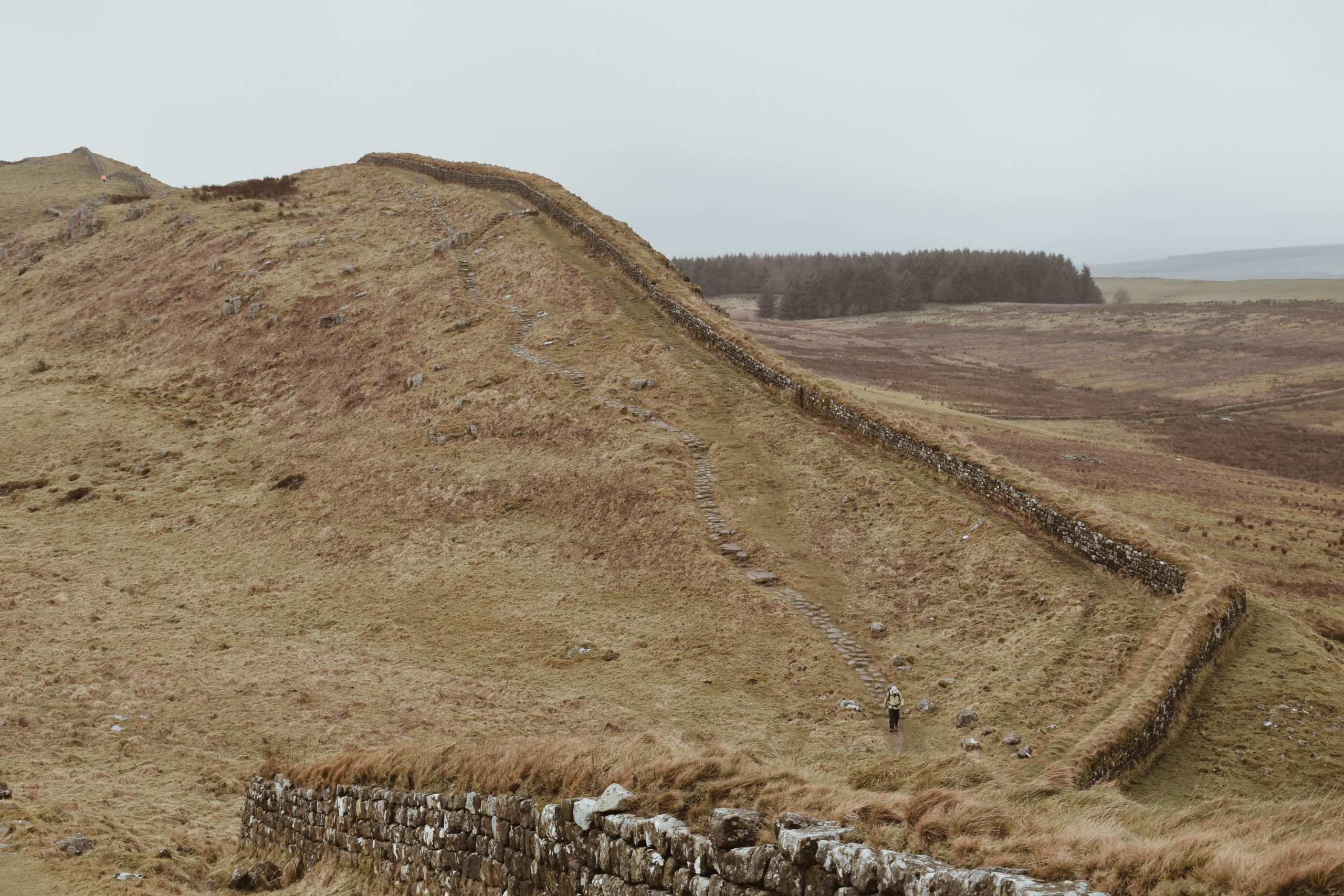[Bordering]
Introduction: On Bordering
Adam Nocek and Stacey Moran
This issue on Bordering was conceived just before the COVID-19 pandemic in early 2020. Since then, the urgency to think and reimagine bordering practices has only intensified. Certain borders have become more porous over the last two years—between biological species, between those who are and are not racially and economically privileged, between waged and unwaged labor. In February 2022, Russia waged war on Ukraine, and with this act of unprovoked military aggression, the unspeakable destruction of human life, political sovereignty, and geopolitical security across the globe became the world’s new reality because of a very clear political and ethical violation of borders. It is not yet clear what the cascading effects of this fascistic military campaign will be or for how long they will be felt. What is clear is that bordering, in its many geopolitical, technological, economic, aesthetic, and ethical dimensions, could not be more pressing today.
What’s known as Border Studies is a field generally interested in how borders of all kinds—national and international, geographical and sociocultural, personal and collective, material and immaterial—shift and change over time and investigates questions of nation, sovereignty, citizenship, and migration (Wilson and Donnan 2021). That said, there is no unified theoretical underpinning to Border Studies; it is a multidisciplinary field that analyzes how borders are dynamic and constantly negotiated (Wastl-Walter 2016). While this issue, taken as a whole, does not consider itself to be doing “Border Studies,” it finds itself indebted to the important ways in which the field self-reflexively examines how borders are undermined, transgressed, constituted, maintained, and policed.
In this issue of Techniques Journal, we are interested in techniques that attend to bordering’s dynamism. We use the gerund form as the title for each issue’s theme because it is known as the “imperfectivizing operator,” which expresses duration. The -ing form carries an inherent temporal valence of simultaneity and ongoingness (Duffley 2006). The grammatical form of the gerund thus evokes each theme—in this case, bordering—as an event in progress, one that is (durationally) incomplete and therefore attends to its ongoingness. Each of the essays in this issue refuse to limit their inquiry to entities that exist on either side of a given border (physical, geopolitical, ideological, or imaginary), nor even to hybrid spaces produced by queerings or crossings of borders, but are attentive to how they announce the spatiotemporal ongoingness that pervades their very production, contestation, and maintenance.
For this issue we asked: What are the various techniques for bordering that promote, detract from, or complicate practices of social and ecological justice? The intention behind this issue was to cast the net wide and envision a broad range of critical and speculative responses to how borders are constructed, maintained, altered, and deconstructed within a broadly experimental arts and humanities frame. From migration and animal studies to design fiction, Gonzo journalism, and online curation—these are just some of the many approaches to “bordering” showcased in this issue and are seen as central to the design of our shared, if unevenly felt, planetary existence. Following the ongoingness of all borders, we could not expect the techniques discussed and performed in this issue—docufiction, curation, nonfiction writing, photography, philosophical abstraction, gardening, sonification, and more—to respect the neat and tidy borders set up between disciplines and fields of research, and they don’t necessarily perform what academe deems “acceptable research.” Instead, this issue is itself an experiment in undermining borders of all kinds, but especially between disciplines, spaces of knowledge production, and between academic and nonacademic publishing.
For example, coming from migration and border studies, Claudia Sadowski-Smith examines the global scale of border crossings, focusing specifically on Amitav Ghosh’s novels Gun Island and The Great Derangement, and how they intervene on questions of mobility through the lens of climate change and the violent legacies of colonialism. What’s more, the essay asks crucial questions about nonhuman mobility and the marginalization of local knowledges in the era of extreme climate change, and in doing so seeks to challenge the anthropocentric priorities of migration studies by attending, among other things, to “the nonhuman world, including […] climate change and nonhuman mobility.”
Margret Grebowicz and Maria Whiteman’s piece, “Trespass Livestock and the Liquid Border,” also tackles the question of border crossings in a non-anthropocentric frame. Grebowicz is the Center for Philosophical Technologies’ (CPT) inaugural Resident in Situated Philosophy (RiSP), an initiative that experiments with the kind of thinking and action that can take place when philosophy is called upon to reside in the world of struggle and conflict. Trained as a philosopher, Grebowicz’s techniques travel far afield of the disciplinary practices of philosophy as she situates herself at the borders between Mexico and Arizona and Texas and attends to the constitutive multispecies geo-bio-social relations that converge to constitute the bordering of Big Bend National Park. Philosophers don’t normally camp out in their truck with two small dogs, trek around with park rangers, follow herds, and fall in love with swaths of land. Grebowicz tramples the borders of both conservation science and law enforcement that normally dominate conversations around the US-Mexico border and attunes herself to the multispecies, multi-agential, multigeographical, and multidisciplinary approaches we might adopt in order to move toward social and environmental justice at the US/Mexico border. Maria Whiteman’s experimental photography is an important aspect of Grebowicz’s philosophical journalism. Whiteman’s photos frame the very questions Grebowicz is asking and give us a window onto the complexity and beauty of nonhuman animal border crossings on the US-Mexico border. As part of the nonhuman technique of bordering, we might do well to recognize the agency of art and method, as well as the borders of well-policed disciplines—in this case, journalism, anthropology, and photography.
Like Grebowicz and Whiteman, designer Jimmy Loizeau similarly challenges the boundaries of his own field by trespassing into journalism and documentary film. As a speculative designer, his work has always been concerned with the ways in which bodies construct and deconstruct political and technological borders; but this time, Loizeau critically meditates on his work by traveling to the French refugee camp known as the Calais Jungle, and in doing so traverses the borders between the refugee and the citizen, the practices of humanization and dehumanization, and the territories of the state and the state of exception. His experiments with Gonzo journalism and its relation to the political ethics of design also provide Loizeau with an opportunity to offer a series of deeply personal reflections on the limits of his own critical and speculative design practice and what it might mean for him to engage in design practice now. As Loizeau crosses many of his own borders—traversing fear, shame, and discomfort (with others and himself)—he is uncomfortable at each stage and constantly questions whether he belongs there (Calais) at all, what he should do there, and in fact changes the trajectory of his work many times. He decides that in fact he does not belong there but ventures to transgress, ever so cautiously and full of self-doubt. Perhaps it’s Loizeau’s humility that is one of his most valuable techniques—indeed, his sense that his own discipline, and all his work up until now (“stupid fucking robots!”), have been deeply problematic, and this has inspired his search for something more meaningful.
Not unlike Loizeau, who questions the boundaries of design practice, in “Opening the Digital Interior,” Matylda Krzykowski transgresses the borders of design curatorial practices, pointing out that digital curation is a material, gestural, and social practice that has the potential to turn our conventions inside out, making them in some ways unrecognizable. Noting that Krzykowski’s exploration of digital spaces and online exhibition began well before the COVID pandemic forced us to shift to these virtual spaces, her work is not only generated by the demands of the pandemic but might also be positioned within an extensive genealogy of work that works in the borderlands of virtual spaces, including practices of information curation (the management, preservation and organization of data, libraries, art museums, etc.), the digital humanities (the mediation and cultivation between digital technology and humanist thought), digital tools for teaching and learning, as well as cyberfeminism’s challenge to the normative masculine spaces of technoscience. We might also include in this genealogy Shelley Jackson’s hypertext novel, Patchwork Girl, that challenged readers to patch together the layers of story, and in contemporary times, the wildly popular virtual reality exhibitions such as Immersive van Gogh. That new modalities of virtual spaces continue to emerge is not surprising, yet Krzykowski’s nomadic choreography waltzes through the borderlands of such spaces, challenging every settled notion of interior/exterior, actual/virtual, public/private, and elite/proletarian spaces.
The transformation of design from within is also central Diseño Detonante’s work. In particular, their two films, and the accompanying interview, explicitly challenge borders in the field of design, asking us to question what is and is not an appropriate medium and topic for design, who does and does not have the “right” to design, and perhaps, most compellingly, how might we work between “reality” and “fiction” in ways that are not just provocative but politically necessary—the fiction of reality and reality of fiction? The films included in this issue might, for these reasons, be categorized as “design fictions,” which address pertinent questions about embodiment, information, deception, sense perception, and geopolitics in Latin America, but these fictions cannot be disconnected from the very real processes of production—fieldwork, research, scripting, editing, and so on—which, they insist, are all folded into what is designed. Indeed, their experimental and critical modes of relating to people, the land, and the environment through various media (e.g., film) are part of their designing. The borders between process and product, designer and artifact, are therefore undermined or blurred in Diseño Detonante’s praxis, so that what is designed is an entire relational field of engagement. In many ways, their praxis answers the calls in critical design studies to undercut the rigid borders between subject (designer) and object (artifact) that are a hallmark of modern design in order to showcase the process of designing itself, which has little respect for the hierarchies and divisions instituted by colonial modernity.
If Diseño Detonante’s films challenge the practices of modern designing, then Tony Fry reminds us how politically urgent it is to imagine the possibility of nonmodern futures. Fry’s piece, “The Politics of Cosmotechnics: Imagination and the Borderlands,” extends his already extensive work on the futures of political world-making. For decades, Fry’s thought has been synonymous with “ontological design,” a field of philosophy and practice that he spearheaded and which borrows extensively from Heideggerian phenomenology to reveal how the human, in its very Being, is designed by the world as much as it designs the world. Situated in this genealogy, Fry’s piece for Techniques Journal tries to imagine a future for political world making/designing outside of the all-consuming technological enframing produced by Euromodernity, which forecloses all other possibilities for being technological, i.e., it “defutures” other technological futures. One of Fry’s many goals is to envision the conditions for a new political imagination that can “enable the attainment of being futural” through a new conception of “cosmotechnics” (which draws on and supplements Yuk Hui), whose “locus” is in the “borderlands.” For Fry, extending Walter Mignolo’s reflections on “border thinking,” the borderlands come to function as a “situated geography of reasoning” that “become[s] the locus of becoming in difference.”
Our interview with Erin Manning and Brian Massumi testifies to how the borders between disciplines and institutions, between what is and is not acceptable research, and between living and theorizing are constantly negotiated and function as sites of experimentation, joy, and suffering. In this lively conversation, they reflect on their experiences with the university, their successes and failures both inside and outside of its formal spaces, as well as the techniques for policing disciplinary and institutional borders through the accelerated neoliberalization of the university. Manning and Massumi also discuss, among other things, how embodied and experimental knowledge practices become techniques for undermining the rigidity of institutional spaces; how “philosophy lived is philosophy practiced”; how radical empiricism traverses the borders between lived reality and concept creation; and how the 3Ecologies Project does not operate according to the logics of accelerated university life and requires attuning to a new set of propositions for living and creating. What is perhaps most delightful about our conversation with Manning and Massumi are their candid reflections on what it means, practically, to buy land in Quebec, maintain three off-the-grid houses, grow food, and ultimately, survive for the sake of living and practicing philosophy.
“Notes from the Field” is a new section of Techniques Journal devoted to creative research that speaks to the Center for Philosophical Technologies’ ongoing effort to promote work that specifically addresses community-based research in different parts of the globe. Included in this issue are CPT collaborators Michael Hornblow, a performance artist and scholar working and living in Bangkok, and Ploy Yamtree, manager and senior community architect at Openspace, a community architecture firm also based in Bangkok. Hornblow’s piece, “Of Buffalo” (in collaboration with Ploy Yamtree and Nausica Castanas), discusses how his work engages the complex realities of life in Nang Loeng, an informal settlement in Bangkok’s old town, historically known for its vibrant arts and culture and today famous for its market. The settlement is currently under numerous forms of threat—e.g., rising prices, food and housing insecurity—and Hornblow critically examines the formation of the “Buffalo Field Festival”: an art and performance festival that aims to revive urban memory and give collective agency to the inhabitants of Nang Loeng. The project “came about,” writes Hornblow, “in the light of these shifting borders—tangible and intangible, historical and contemporary, collaborative, communal, precious, precarious.” Balancing ethnography, theory, and storytelling, Hornblow discusses his collaboration with community members and Openspace and skillfully examines the development of the project over the years, paying special attention to its latest iteration, which included a local design studio (with international collaborators) and new focus on the social, political, and environmental problems facing the Nang Loeng community.
Led by Ploy Yamtree, Openspace is a collective of research practitioners that uses codesign and participatory methods to work with communities across Thailand to institute sustainable practices for housing, food production, urban design, conservation, and more. Openspace has always aimed at unsettling borders between architecture, planning, urban design, activism, agriculture, cooking, community development, and arts-based research. In her audio piece, “The Seven Observations of the Invisible Community Building Processes,” Yamtree draws on her extensive experience to reflect on what it means to design with communities and constantly negotiate borders between, among other things, expertise and experimentation, the completion and incompletion of work, being inside and outside a community, the blueprint and the community who enacts it. In the end, however, we think Yamtree asks us to reflect on the following questions when designing with communities: “How is it exactly to be part of a community, to create something together and get a sense of belonging, a sense of warmth, a place where you always feel free to share, and so on? And how is it to be part of more than just an ‘institution,’ to form real connections with those around you, to create, to live, to find long-term inspiration, and to keep growing together with the people, places, and spirits around you?”
Each of the pieces selected for this issue of Techniques Journal clearly have a particular way of reflecting on and experimenting with borders, and in this sense, represent a wide range of perspectives on “bordering.” But they also, and perhaps just as important from curatorial perspective, border one another.
REFERENCES
Duffley, Patrick J. 2006. The English Gerund-Participle: A Comparison with the Infinitive. Vol. 61. New York: Peter Lang.
Wastl-Walter, Doris, ed. 2016. The Routledge Research Companion to Border Studies. London: Routledge.
Wilson, Thomas M., and Hastings Donnan, eds. 2021. A Companion to Border Studies. Chichester: John Wiley & Sons.
Issues articles [9]
-
Migration Studies in the Age of Climate Change, the Blue Humanities, and Amitav Ghosh’s Gun Island
-
Trespass Livestock and the Liquid Border
-
Hard Borders/Soft Disciplines/Gonzo Actions: Gonzo, Borders, the Unqualified, and the Equivocal
-
Opening the Digital Interior: The Infinite Display
-
Im/Explosión: A Conversation with Diseño Detonate
-
The Politics of Cosmotechnics: Imagination and the Borderlands
-
3Ecologies Project: An Interview with Erin Manning and Brian Massumi
-
Of Buffalo . . . Notes from the Field
-
The Seven Observations of the Invisible Community Building Processes
Guest Respondent
-

Stephen Loo
is Professor of Design at UNSW Sydney.He has published widely in architecture and design theory, biophilosophy, posthumanist ethics, ecological humanities, and experimental computational and digital thinking. He holds a PhD in architecture and philosophy from the University of Sydney. Recent books include Deleuze and Architecture (ed. with Helene Frichot, 2012) and Poetic Biopolitics (ed. with Peg Rawes and Tim Mathews, 2016) and is currently working on Speculative Ethologies (with Dr. Undine Sellbach) on the relationship between entomology, psychoanalysis, and ethics. Stephen is a founding partner of the award-winning design, architecture, interpretation, and exhibition practice Mulloway Studio, whose projects have featured in the Venice Biennale in 2008 and 2014. He has a performance philosophy–based art practice and has shown internationally in Paris, Berlin, London, Sydney, and Adelaide and is part of an international collective, The Food Project. Stephen is a Visiting Professor at the Center for Philosophical Technologies at Arizona State University, Adjunct Professor at University of Tasmania and University College London, and External Examiner at Goldsmiths College London.
Guest Respondent
-

Stephen Loo
is Professor of Design at UNSW Sydney.is Professor of Design at UNSW Sydney.He has published widely in architecture and design theory, biophilosophy, posthumanist ethics, ecological humanities, and experimental computational and digital thinking. He holds a PhD in architecture and philosophy from the University of Sydney. Recent books include Deleuze and Architecture (ed. with Helene Frichot, 2012) and Poetic Biopolitics (ed. with Peg Rawes and Tim Mathews, 2016) and is currently working on Speculative Ethologies (with Dr. Undine Sellbach) on the relationship between entomology, psychoanalysis, and ethics. Stephen is a founding partner of the award-winning design, architecture, interpretation, and exhibition practice Mulloway Studio, whose projects have featured in the Venice Biennale in 2008 and 2014. He has a performance philosophy–based art practice and has shown internationally in Paris, Berlin, London, Sydney, and Adelaide and is part of an international collective, The Food Project. Stephen is a Visiting Professor at the Center for Philosophical Technologies at Arizona State University, Adjunct Professor at University of Tasmania and University College London, and External Examiner at Goldsmiths College London.


